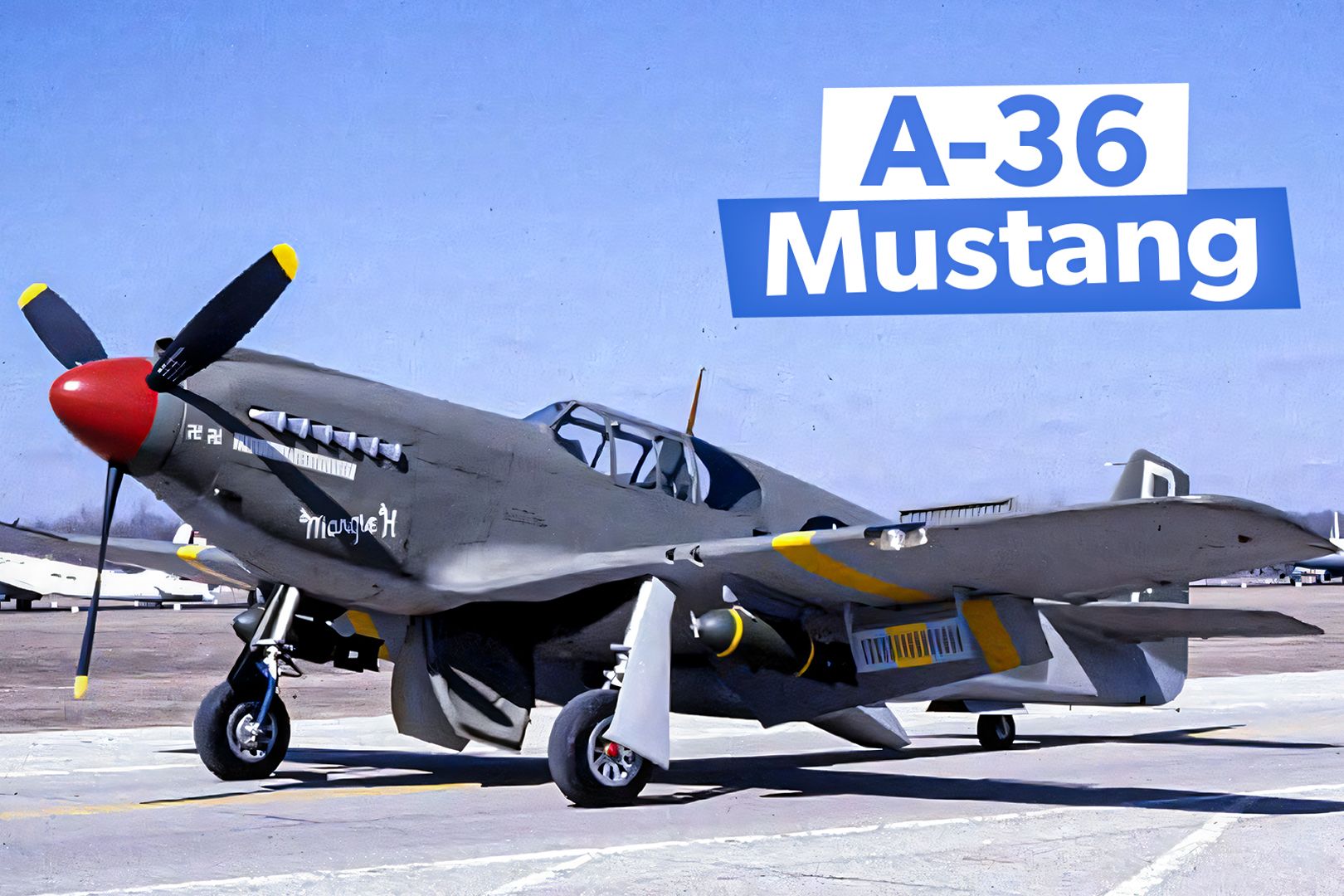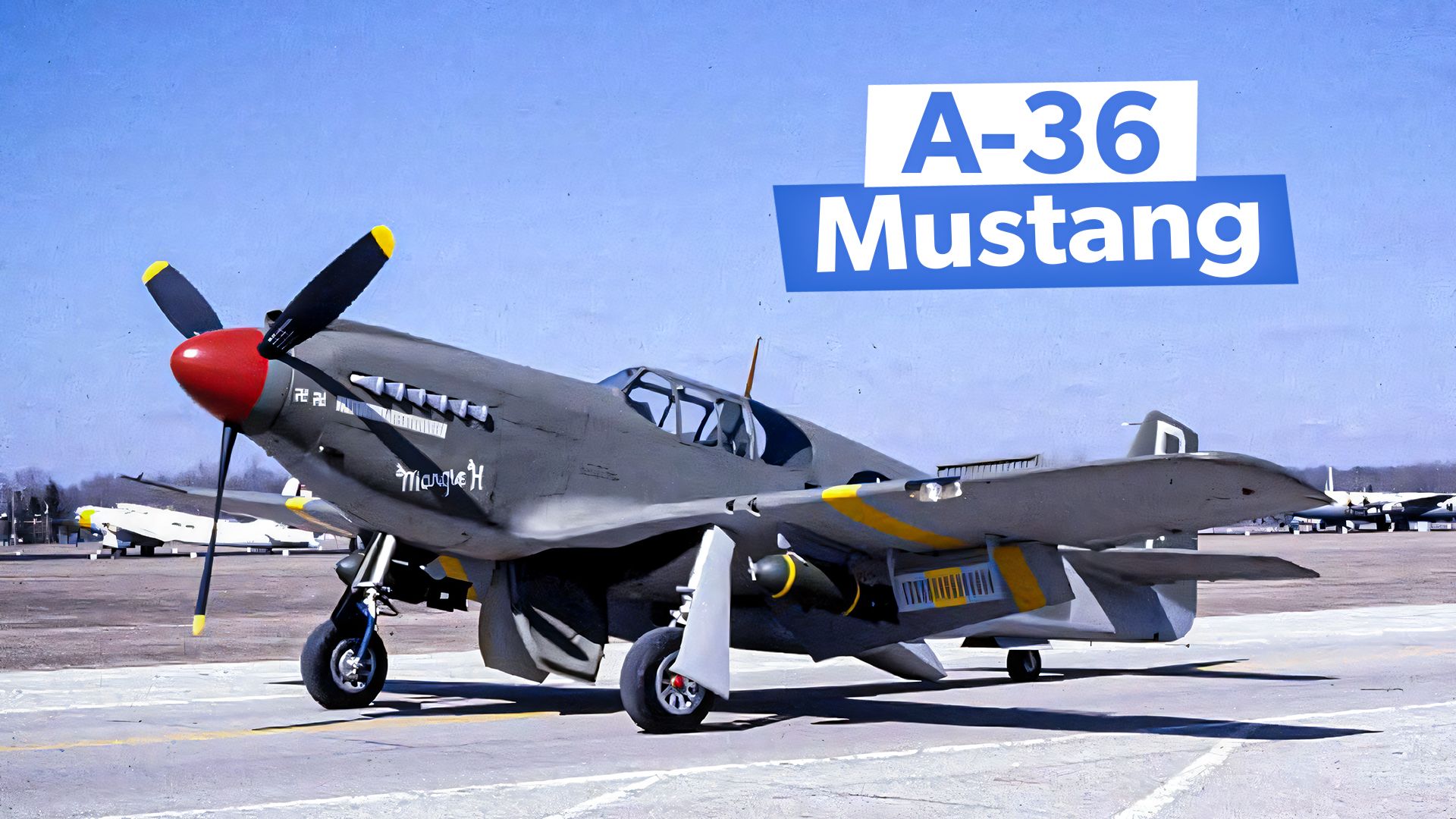
Summary
- P-51 Mustangs excelled as fighters in WWII for various air forces worldwide.
- The A-36 Apache was a predecessor variant of the P-51 for dive-bomber & ground attack roles.
- The A-36’s combat performance included air-to-air fights and was used in key World War II operations.
When the word “Apache” is used in the military aviation context, chances are most aviation enthusiasts think of the US Army’s acclaimed Boeing AH-64 helicopter gunship. Meanwhile, when it comes to the legendary P-51 Mustang fighter plane of the Second World War, they think of it as an air-to-air platform first and foremost, as American fighter-bomber (i.e., ground attack) duties during WWII were generally associated with the Republic P-47 Thunderbolt.
For American dive bombers, most think of the Douglas SBD Dauntless and Curtiss SB2C Helldiver as the premier examples.
But as it turns out, several decades before the Apache attack chopper was designed, there was a little-known dive bomber/ground-attack variant (actually a predecessor, if one wishes to nitpick technically) of the P-51 bearing the Apache moniker. I myself just happened to stumble upon it while scouring YouTube for research material for some of my previous Simple Flying articles for YouTube. Time now to give the A-36 Apache its moment in the spotlight.
(Many thanks to Brian Pearce of the World of Warbirds YouTube channel for the inspiration to write this article!)
A-36 early history and specifications
Designed by Edgar Schmued and manufactured by (the now-defunct) North American Aviation, the A-36A (original designation NA-97) made its maiden flight on September 21, 1942, and entered into the production phase that same month. The warbird officially entered operational service with the US Army Air Forces (USAAF) shortly thereafter.
The fighter-bomber came with the following specifications:
|
Fuselage Length: |
32 ft 3 in (9.83 m) |
|
Wingspan: |
37 ft 0.25 in (11.28 m) |
|
Height: |
12 ft 2 in (3.71 m) |
|
Gross Weight: |
10,000 lb (4,535 kg) |
|
Powerplant: |
1 × Allison V-1710-87 liquid-cooled piston V12 engine, 1,325 hp (988 kW) |
|
Max Airspeed: |
365 mph (590 km/h, 315 kn) |
|
Cruise Speed: |
250 mph (400 km/h, 215 kn) |
|
Range: |
550 mi (885 km, 478 NM) |
|
Service Ceiling: |
25,100 ft (7,650 m) |
|
Armament: |
|
In addition, as the World of Warbirds YouTube video points out, the Apache had an impressive dive speed of 450 to 500 mph (724 to 804 km/h): “and the dive brakes could really only slow it down to about 350 miles per hour [563 km/h].” That made it a faster diver than the Douglas Dauntless and roughly even with the Luftwaffe’s Junkers Ju-87 Stuka dive bomber.
Operational history and performance
The Apache was first “blooded” in combat on June 6, 1943 (exactly one year before D-Day and one year after the Battle of Midway ended) in support of Operation Corkscrew, an aerial and naval bombardment of the Fascist-controlled Italian island of Pantelleria to soft up the defenders in preparation for the Allied landing troops. The plane performed quite well; the garrison’s capture proved to be quite fortuitous, as it became a vital base for Allied aircraft during the assault on Sicily. During that Sicily invasion. According to Mr Pearce:
“About 300 A-36s were employed for this work, being called in whenever the Allies needed mopping up enemy gun positions and other strong points knocked out.”
Regarding the A-36’s air-to-air combat performance, Pearce adds this:
“Unlike many other dive bombers, the A-36 was also good at air-to-air fighting, and the type racked up 84 enemy kills. And Lieutenant Michael T. Russo from the 27th Fighter-Bomber Group became an ace.”
The warbird was also used in the China-India-Burma Theater of Operations by the 311th Fighter-Bomber Group, being used for reconnaissance, dive-bombing, and fighter missions over longer ranges and higher altitudes compared with the Mediterranean Theater. However, the A-36 was less successful in this environment, as the Allison engine’s performance was less optimal. The Apaches had to face lighter and more nimble Imperial Japanese fighters.
Moreover, the A-36’s Allison engine was highly vulnerable to enemy ground fire. By June 1944, the Apache were being replaced by more durable warbirds like the aforementioned “T-Bolt.” However, the A-36A did manage to remain in service in small numbers throughout the remaining year of the war, with some being retained in the US as training aircraft.
Where are they now?
Out of the 500 A-36s built, three survive today:
- Serial No. 42-83731 – an airworthy specimen with a private owner in Houston, Texas
- Serial No. 42-83738 “Baby Carmen” – an airworthy specimen restored by the Collings Foundation in Stow, Massachusetts and previously housed at the American Heritage Museum in Hudson, MA; according to the Museum’s website, the plane is “currently based at Worcester airport and is not open for public viewing. For an operation schedule please call the office.”
- Serial No. 42-83665 “Margie H” – Static display specimen at the National Museum of the United States Air Force at Wright-Patterson AFB in Dayton, Ohio. According to the Museum’s website:
“The Museum’s A-36A was donated by Charles P. Doyle of Rosemount, Minnesota and was restored by members of the Minnesota Air National Guard. It is marked to represent the A-36A flown by Capt Lawrence Dye, a pilot of the 522nd Fighter-Bomber Squadron, during combat in North Africa and Italy.”
For the benefit of all gamers out there, Benny Kirk of autoevolution adds this:
“Meanwhile, a whole new generation of av-geeks was introduced to the ground-pound Mustang on June 30th, 2015, with the Apache’s addition in the update 1.41 ‘Cold Steel’ for Gaijin Entertainment’s vehicle combat simulator War Thunder. With an air realistic-battle rating of 3.0, the A-36 found itself the favorite of many novice War Thunder aviators who no doubt found the novelty of a dive bomber built from a fighter plane just as amusing as its pilots did so many decades ago.”

